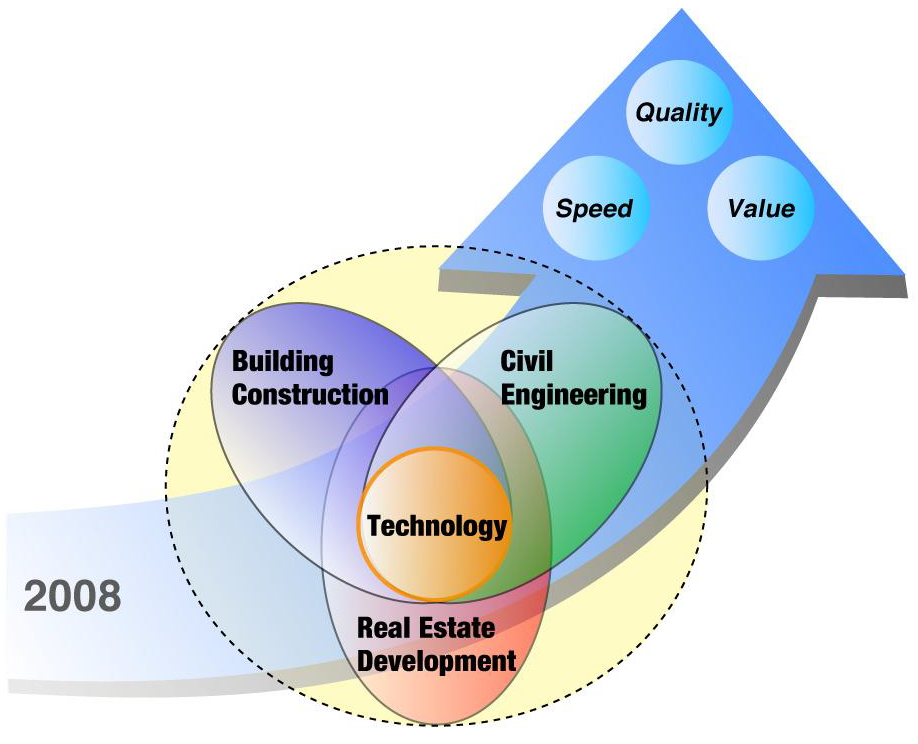The Collapse of the Bubble Economy Followed by a Long Period of Recession and Deflation
In addition to the recession, the construction industry faced challenges associated with the diversification of contract methods, including the introduction of limited general competitive bidding on public works projects. These changes precipitated price wars so fierce that, by the mid-1990s, the industry found itself in a race for its very survival. In order to survive, the entire process of the construction business had to be revamped to focus on operational efficiency. In short, the industry had to find every way possible to ensure profitability.
From an early stage, Obayashi Corporation built its business by promoting the automation and computerization of construction work. Obayashi was the first company to develop ABCS: Automated Building Construction System, which it announced in 1989. The Riverside Sumida Bachelor Dormitory (completed in 1994) was built using this system. The project suggested new directions for advanced construction technologies.
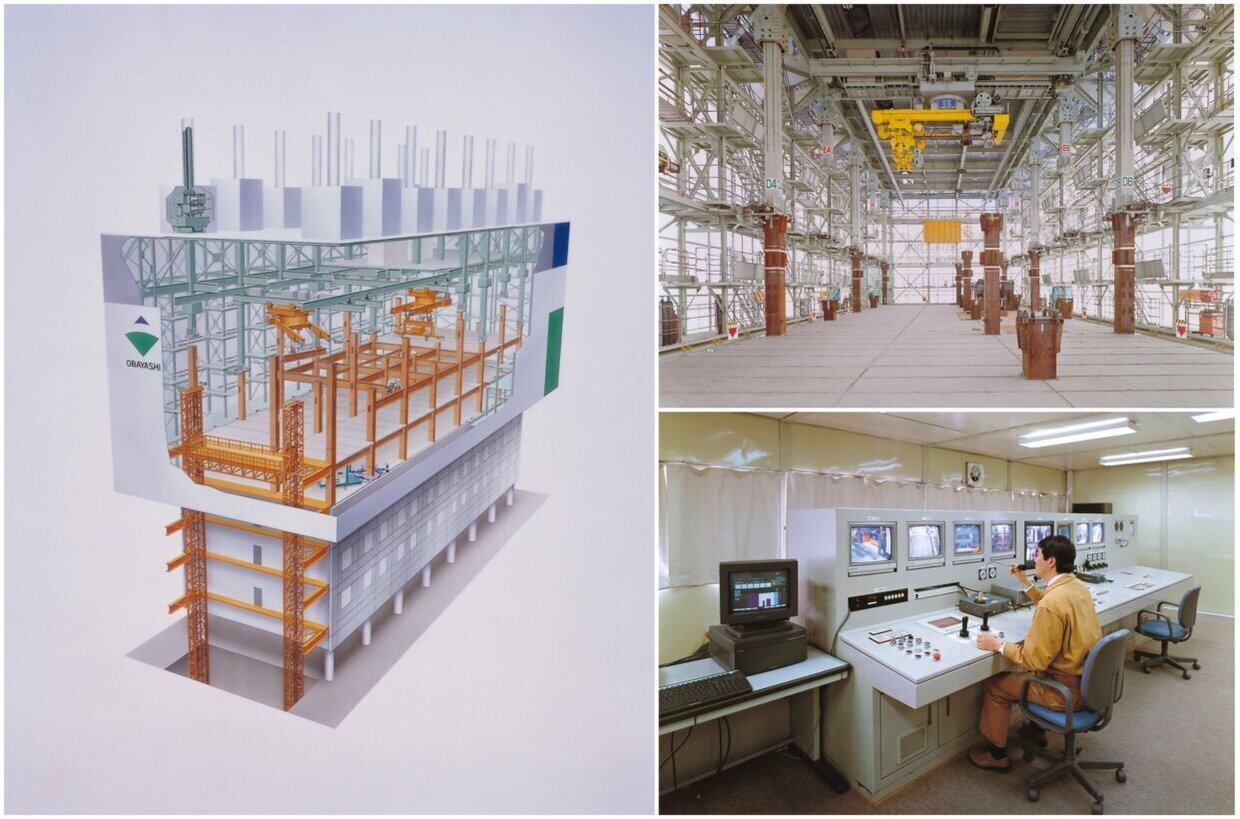
Development of Seismic Resistance, Seismic Isolation, and Vibration Control Technologies
The Great Hanshin-Awaji Earthquake severely impacted the city of Kobe in January 1995. Many buildings, including a significant amount of public infrastructure, were either destroyed or severely damaged. The earthquake clearly demonstrated the vital importance of seismic reinforcement, seismic isolation, and vibration control technologies.
In March 1996, Obayashi established seismic design guidelines for new and retrofitted buildings. At the same time, the company introduced new technologies for building construction, including a method for repairing and reinforcing using carbon fibers (Carbon Fiber Retrofitting System), and vibration damping using steel panels (Y-shaped braces). Later, Obayashi responded to the increased demand for building technologies that limit noise and vibration by developing and commercializing such new technologies as the 3Q-Wall (2000).
The company had been developing seismic isolation technologies and working on demonstrating their efficacy through seismic observations conducted in the 1980s. One of these technologies, the company-developed seismic isolation damper (Disc Damper), was used in Obayashi’s Nagoya Branch building, which was completed in June 1998. In the 2000s, the company gained experience in the construction of three-dimensional floor isolation systems. These systems were developed for data centers and other facilities. Obayashi also began work on the Brake Damper in the latter half of the 1990s. The Brake Damper is a proprietary high-performance vibration control system which is widely used in buildings today.
In September 1999, the Dynamics Research Center (now the Dynamics Laboratory) was built at the Technology Research Institute. This facility focuses research and development efforts in the field of seismic resistance and disaster prevention engineering. The Laboratory is equipped with one of the largest tri-axial shaking tables in Japan, a geotechnical centrifuge system, and an ultra-large multipurpose rock mass testing system. With the completion of this facility, Obayashi became able to perform field testing that reproduces the conditions in buildings and civil engineering structures during earthquakes. Data thus obtained is used to characterize destruction mechanisms and to develop effective countermeasures in response.
(Reference: Special Contents > Obayashi Technology Research Institute)
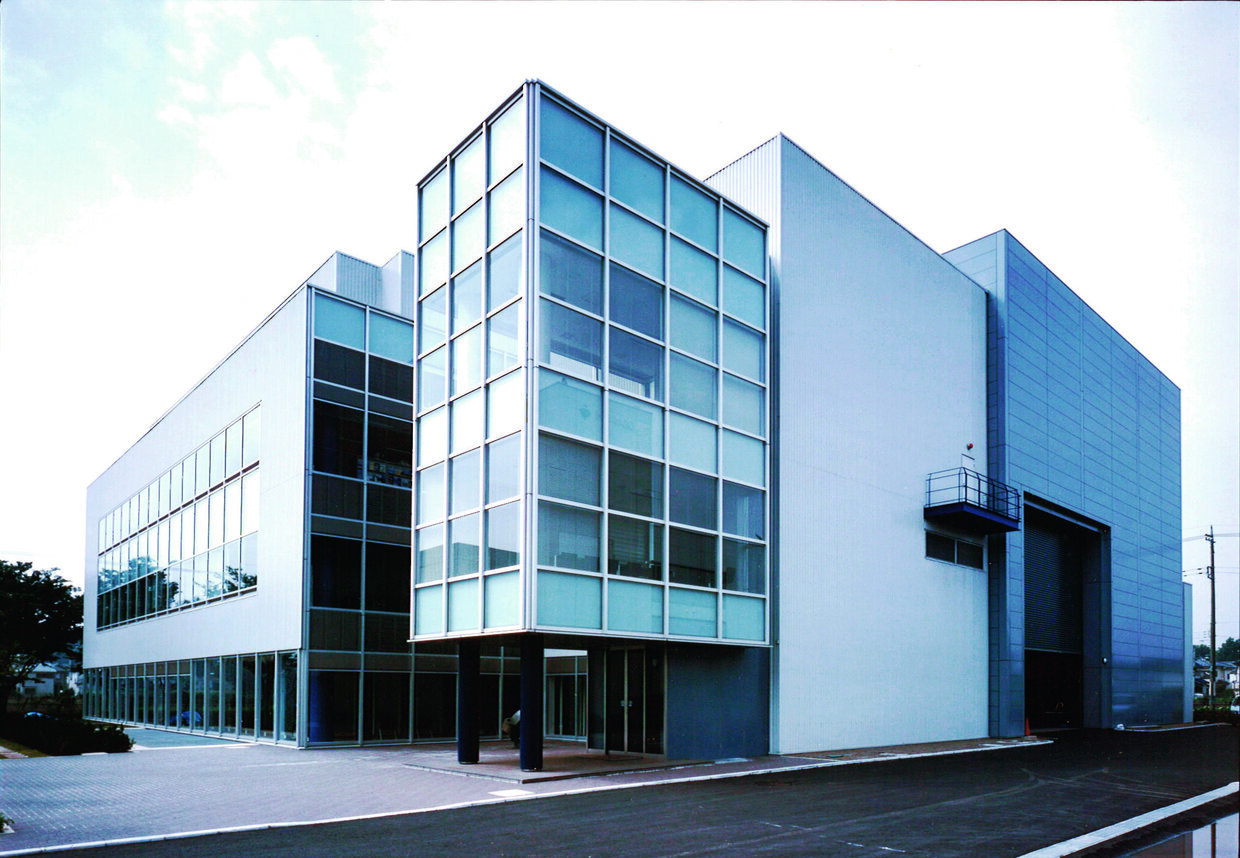
Relocating the Head Office to Shinagawa Intercity
In June 1997, Shinji Mukasa was appointed as fifth president of Obayashi Corporation. He faced a daunting set of challenges as Japan’s GDP experienced negative growth for the first time in 23 years. President Mukasa spotlighted the need for innovative ways to accelerate corporate activities while simultaneously reducing costs. He began his tenure by spearheading a top-to-bottom review of Obayashi’s management fundamentals. In 1999, the company relocated its Tokyo Head Office to Shinagawa Intercity (Kōnan, Minato-ku) and consolidated its branches in an effort to speed the implementation of cost-reduction measures and enhance competitiveness. These initiatives centered on setting up and developing information systems and improving organizational efficiency across all sectors, as well as enhancing collaboration.
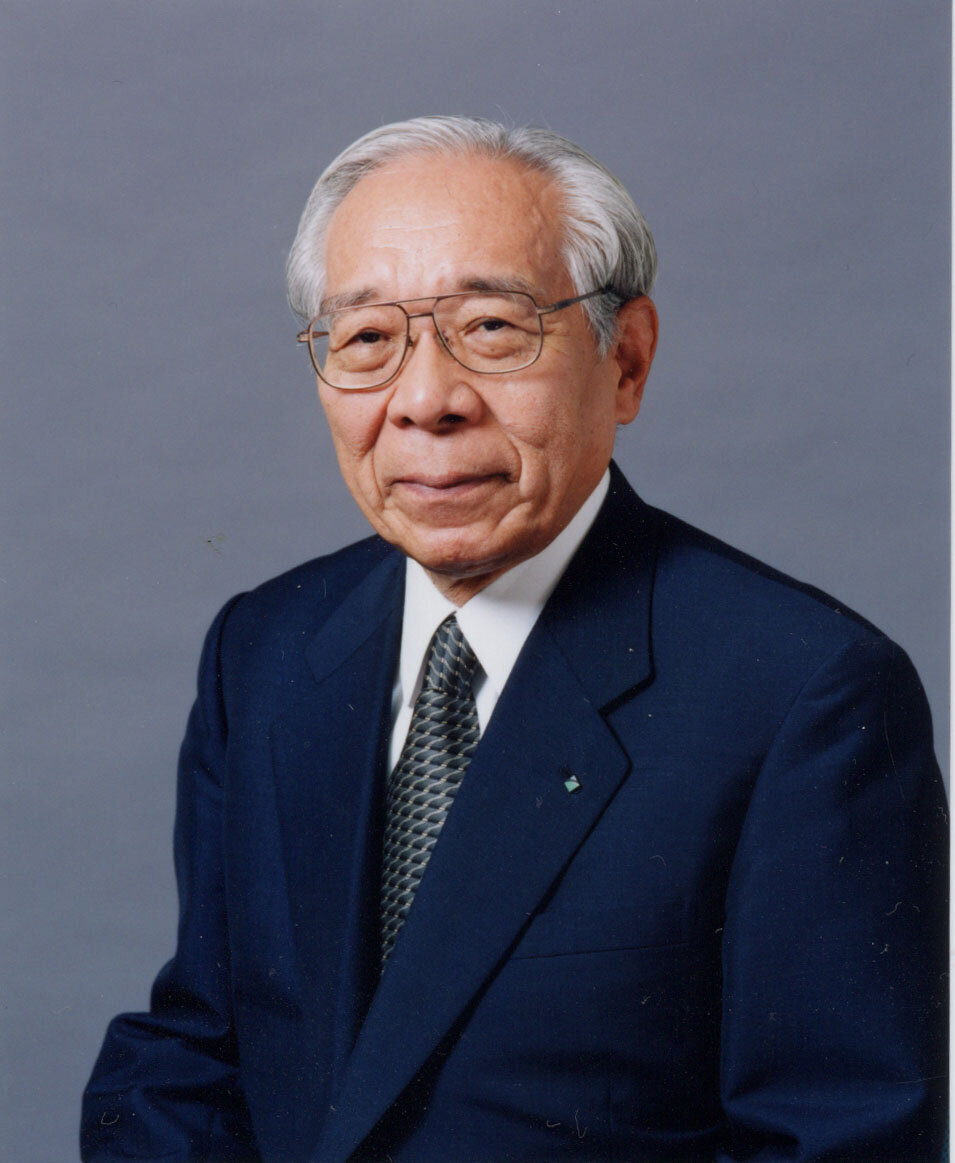
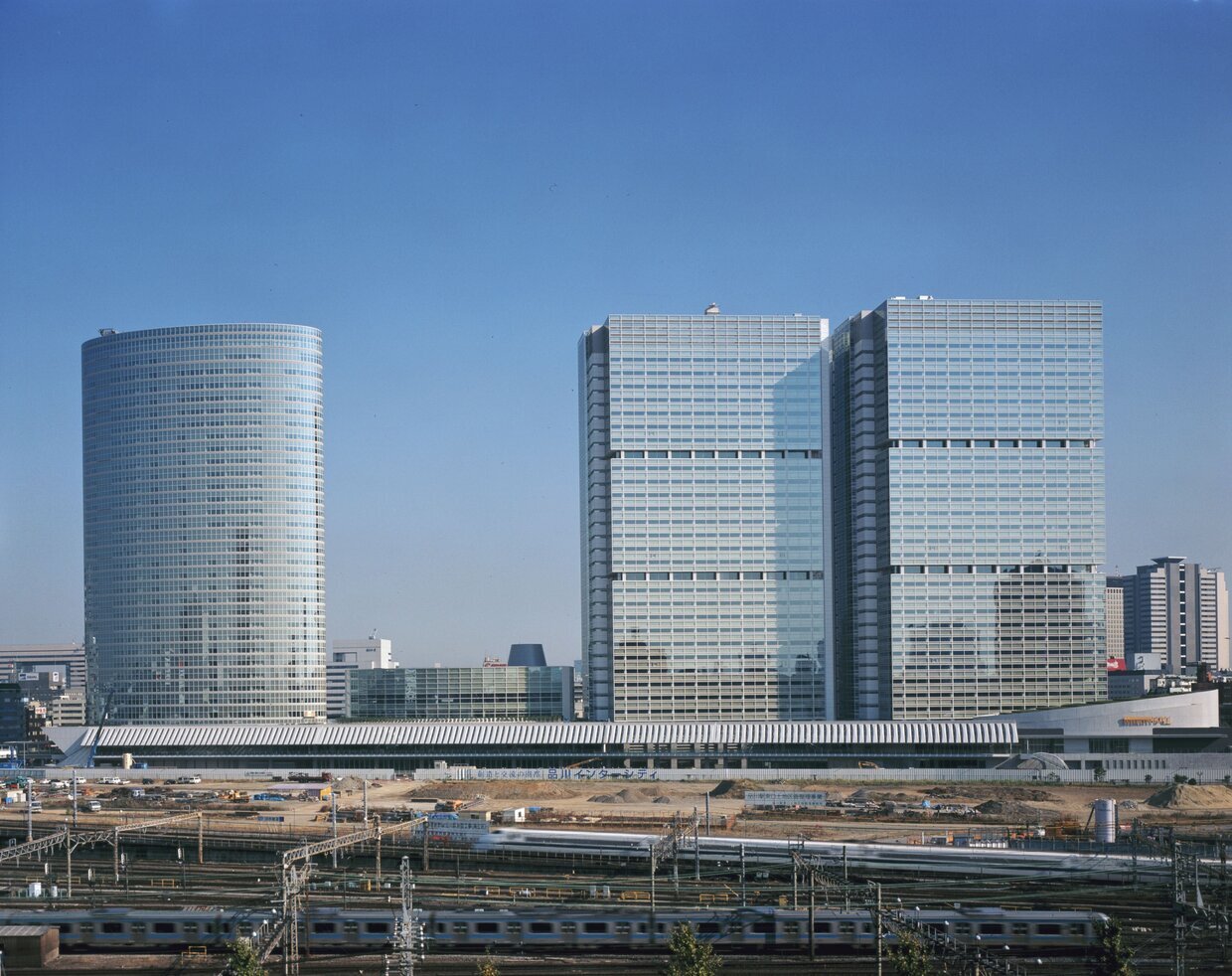
(1998; Obayashi Corporation’s Head Office is building B in the center)
This period at the end of the twentieth century saw the completion of a series of high-profile public works projects. Among these projects were the Tokyo Bay Aqua-Line (opened in December 1997), the Akashi-Kaikyo Bridge (opened in April 1998), and the Setouchi Shimanami Kaido (Nishiseto Expressway) (opened in May 1999). At the same time, Obayashi redoubled its efforts to get contracts for large-scale private-sector projects through organization-wide business strategies that look ahead, anticipating and responding to our customers’ future needs.
In March 2003, President Mukasa announced the company’s “Vision of Corporate Excellence,” which described the kind of company toward which all Obayashi people should aspire. The Vision also outlined the steps to be taken to achieve that goal. Norio Wakimura became the sixth president of Obayashi Corporation in June 2005, inheriting the task of implementing the Vision of Corporate Excellence.
In June 2003, Takeo Obayashi was appointed chairman, succeeding Yoshiro Obayashi, who retired with the title of honorary chairman.
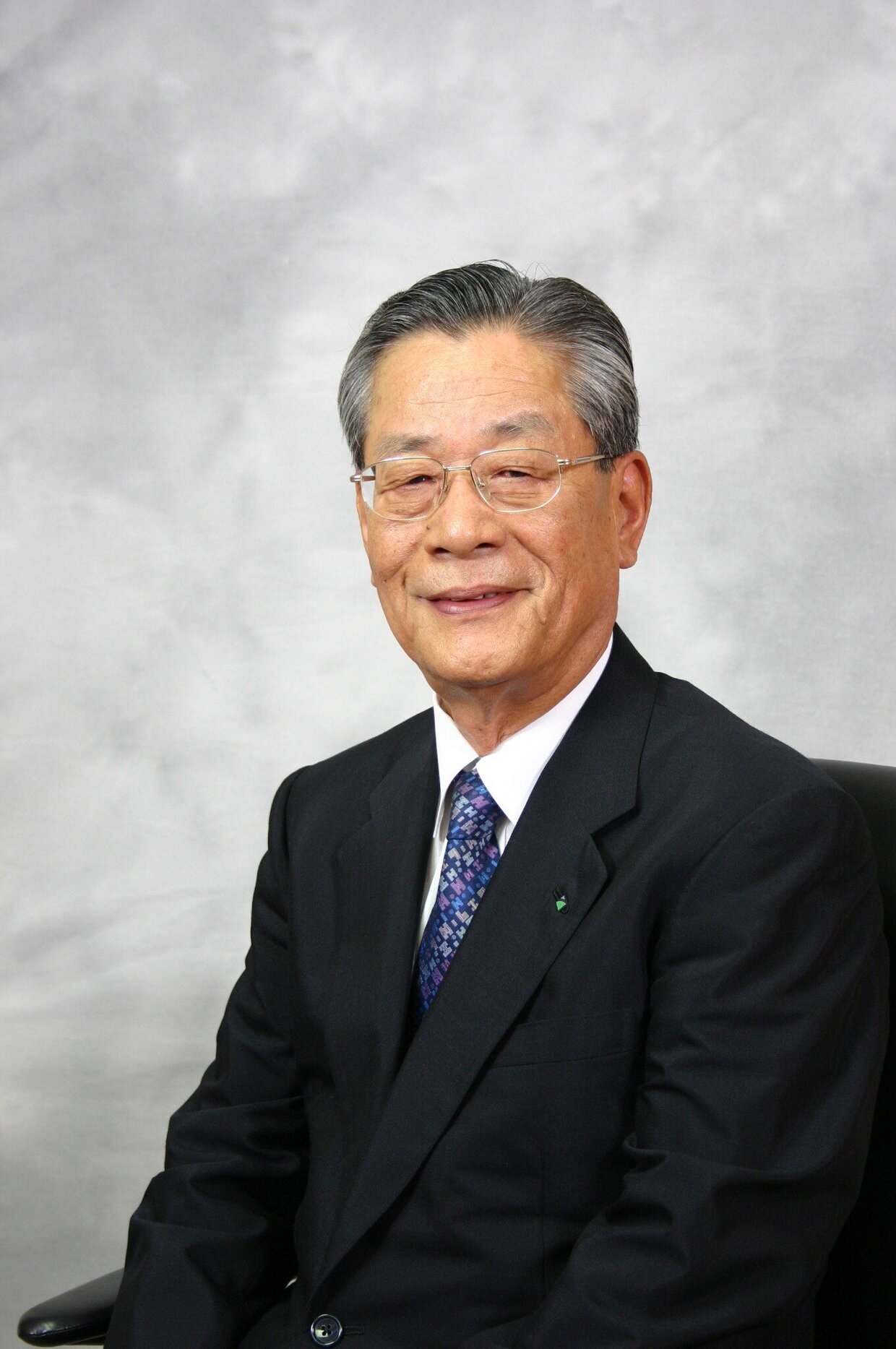
Laying the Foundation for Overseas Expansion
Japan began reducing domestic construction expenditures in 1997. In response, Obayashi Corporation increased its efforts to develop overseas markets through the establishment of local wholly-owned companies and strategic acquisitions. Spurred by the intense demand for construction services in the ASEAN region, Obayashi Vietnam Corporation was established in Ho Chi Minh City, Vietnam in July 2006. Obayashi already had substantial experience in Vietnam, having opened its Hanoi Office in 1992 to take on civil engineering work under Japanese ODA (Official Development Assistance) as well as factory construction for Japanese companies. The purpose of the newly established branch office was to get more contracts for infrastructure development along with projects for Japanese companies. In 2003, Thai Obayashi Corporation Limited appointed its first Thai president.
In the United States, the parallel structure of directly managed offices and wholly-owned subsidiaries was eliminated with the closure of offices on the East and West coasts. This strategy was adopted to clarify responsibilities for profit and loss. A holding company, Obayashi USA, was set up to take the place of these offices. The office was initially set up in Los Angeles, but was later relocated to Burlingame, California. The real estate company OC Real Estate Management, and construction companies James E. Roberts-Obayashi Corporation (established as a joint venture in 1978 in San Francisco) and E.W. Howell Co., LLC (based in New York, which had become a group subsidiary in 1989) were all brought under the umbrella of Obayashi USA. Obayashi went on to acquire North Carolina general contractor John S. Clark in November 2005, and San Francisco general contractor Webcor in July 2007. These companies also joined the Obayashi USA family.
In April 2008, the Tokyo Head Office Overseas Building Construction and Overseas Civil Engineering Construction Divisions, which had previously been run as separate organizations, were merged to create the Overseas Business Division. To ensure sound management across the company’s entire overseas construction business, it was vital to centralize information and allow access throughout the company. It was also seen as essential to share and deepen the knowledge and expertise that the company had built up over decades of construction projects. This approach was needed to control costs and support effective risk management, which in turn would lead to greater profitability.
(Reference: Special Contents > Global Presence)
A Series of Misconduct Issues and the Global Financial Crisis
While these management strategies helped the company get back on track, a series of misconduct incidents connected with public works projects occurred between 2006 and 2007. These incidents severely impacted the company’s reputation. In the midst of this crisis, Toru Shiraishi became the seventh president of the company. He called for Obayashi Corporation to make a fresh start based on a sound corporate culture and a true spirit of fair competition. He stressed the importance of implementing a rigorous compliance regime.
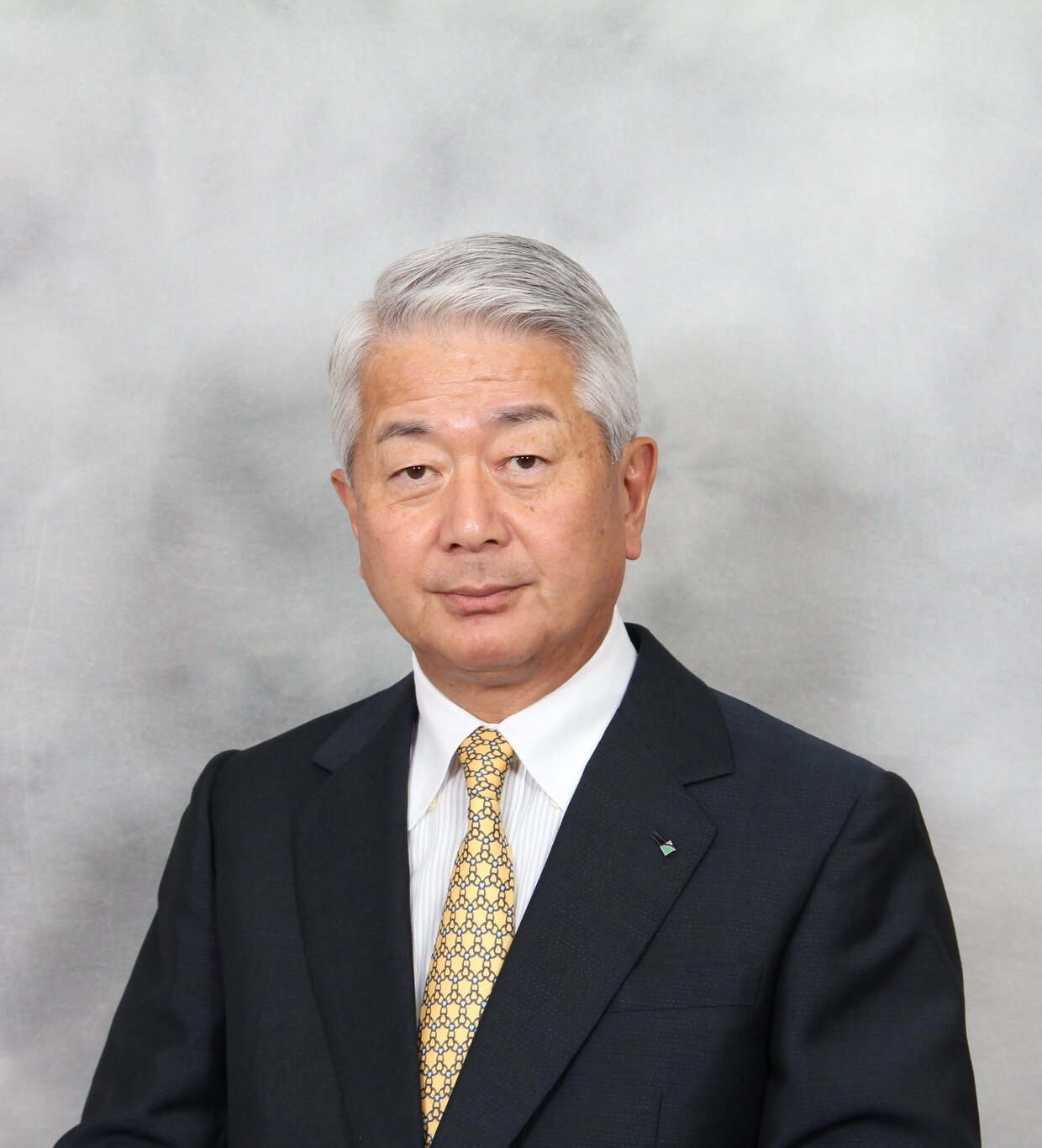
In November of that same year, President Shiraishi announced the Obayashi’s five-year “Medium-Term Business Plan 2008: Leveraging Technology for Growth,” with FY2009.3 set as the initial year and FY2013.3 as the target year. As its title suggests, the plan identified technology as the wellspring of Obayashi’s competitive strength and defined the kind of organization the company should strive to become. A five-year numerical target of 80 billion yen in consolidated income before taxes was set for FY2013.3. The plan also listed key measures for achieving this goal, including expanding business areas, developing market-oriented technologies, increasing the proportion of design–build contracts in building construction, and enhancing the company’s strength in making effective project proposals. Unfortunately, soon after the announcement of the Obayashi plan, a global financial crisis was triggered by the collapse of the financial services giant Lehman Brothers in September 2008. Obayashi Corporation was left with no alternative but to revise its planning in light of extremely challenging economic conditions.
